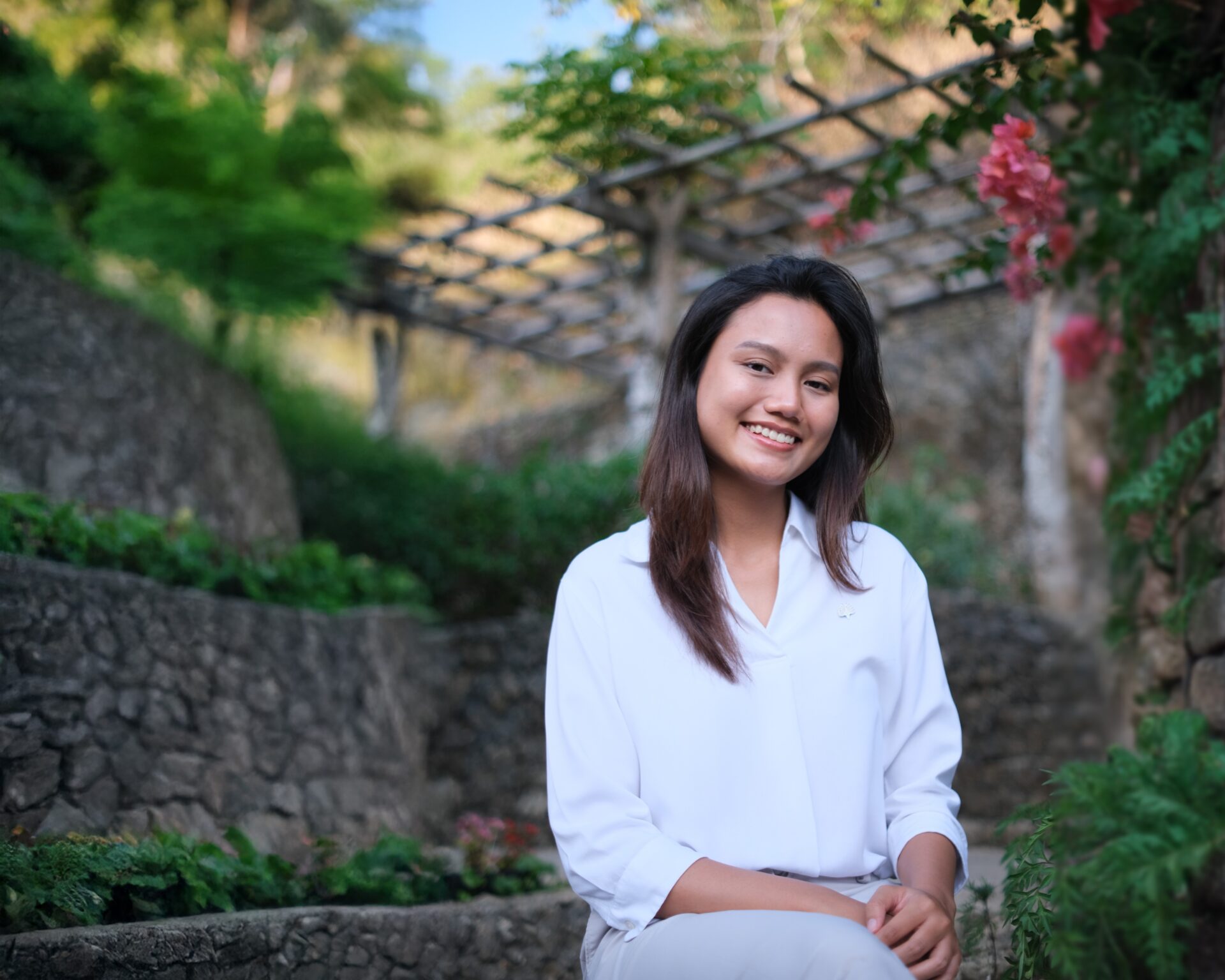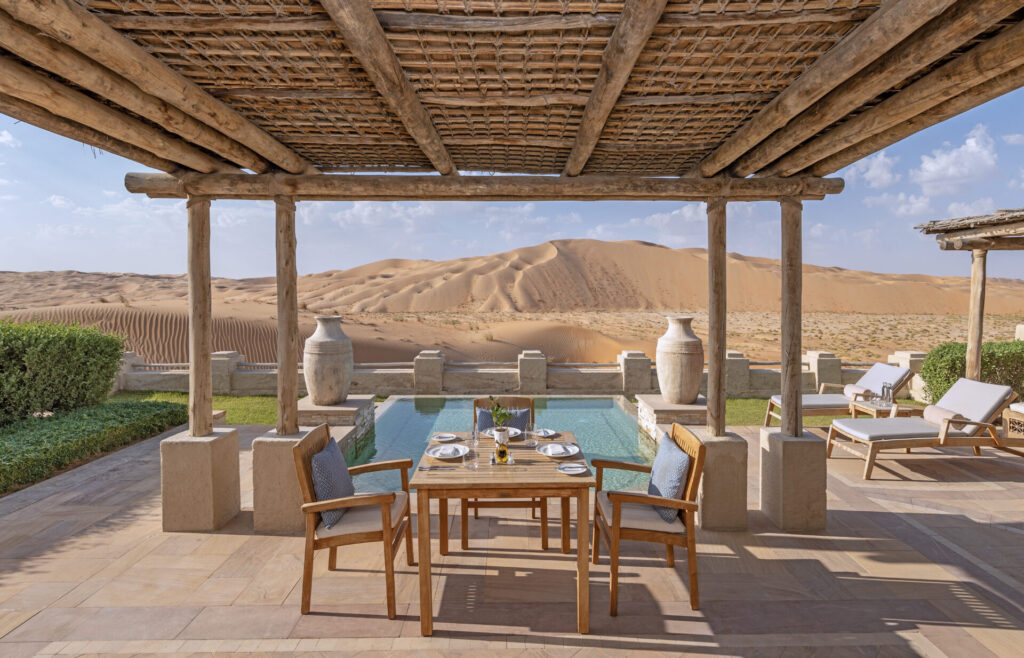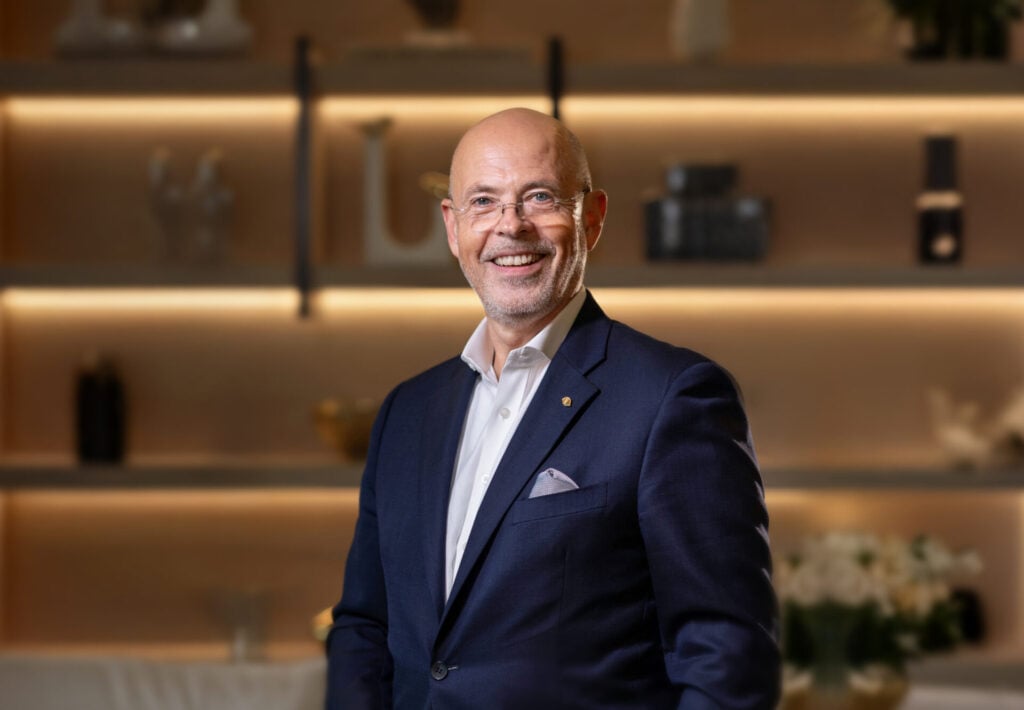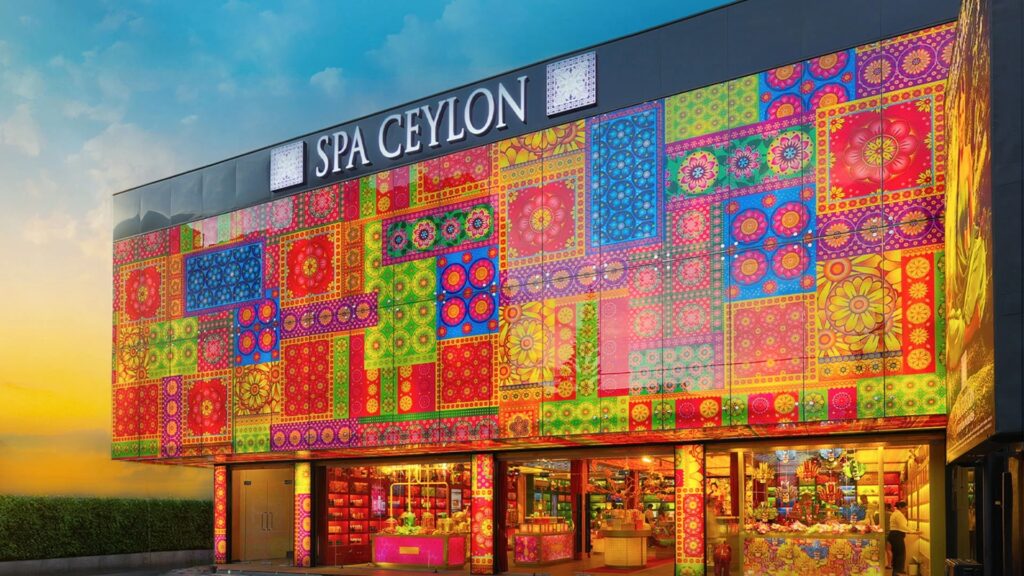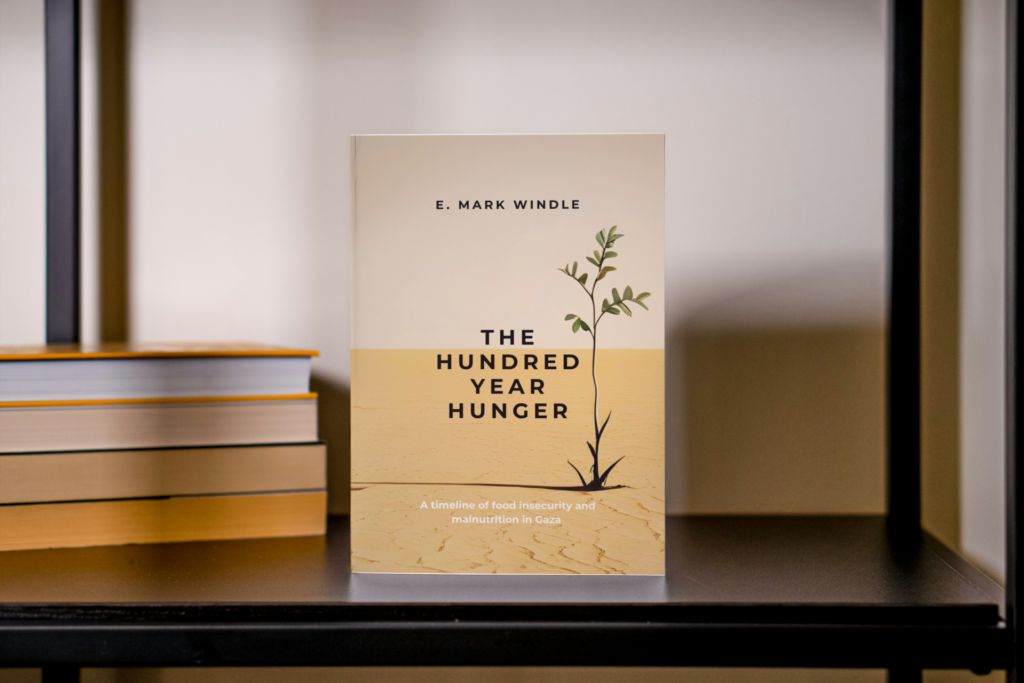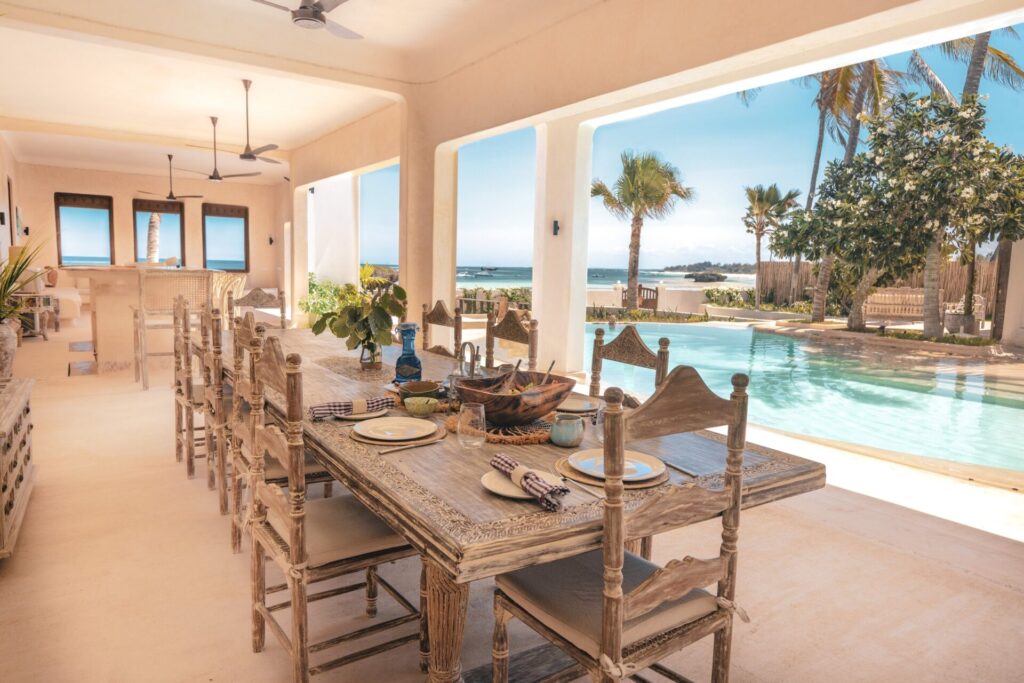Bali has long been a magnet for global travellers, but Raffles Bali in Jimbaran Bay manages to capture the island’s spirit in a way not many places can. Spread over 23 hectares yet home to just 32 villas, it’s spacious and at the same time, personal.
Yet there’s much more to this resort than sweeping views and luxury suites. Raffles Bali is working to protect the environment that makes it so special, from safeguarding turtle hatchlings on its beach to preserving native trees and investing in renewable energy.
This commitment isn’t just a corporate initiative either, it’s led by a team who call the island home. We sat down with Bali born Eunike Santoso, Sustainability Executive at Raffles Bali, to learn more about the resort’s green vision.
Q: Unike, tell us about your journey into sustainability?
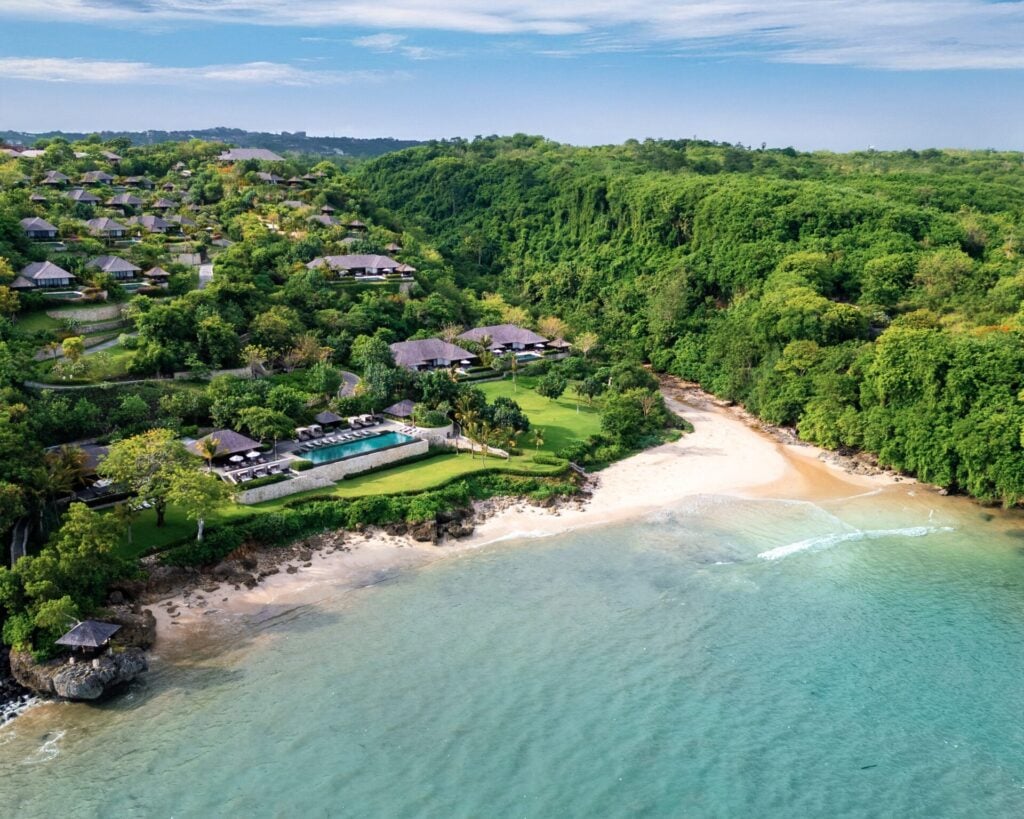
Growing up here gave me a deep connection to nature. The beach was my playground, but one day I returned to my favourite spot and found it completely covered in plastic. There was more plastic than fishermen, more plastic than people. I was still a little girl, but that moment stayed with me. I knew something had to be done.
Later, my university degree in Life Sciences covered chemistry, biology, and physics, but it was sustainable development that drew me in because it connects all these subjects with real-world impact. During my studies I developed a biodegradable material with support from Taiwan’s Ministry of Education. That project didn’t move forward, but it convinced me that sustainability was my path.
I joined Raffles Bali almost two years ago, and now I have the privilege of turning that passion into practice.
Q: What is the overarching philosophy of sustainability at Raffles Bali?
At Raffles, we put people and nature at the heart of sustainability. They’re interconnected. If communities aren’t sustainable, nature can’t thrive, and if nature isn’t preserved, people suffer.
The resort sits on 23 hectares but has only 32 villas, and 60 per cent of the land is gardens and greenery. We designed it so guests feel immersed in nature, not separated from it. Even though villas are built on a slope with ocean views, you cannot see your neighbour, privacy comes from trees and plants, not concrete walls.
When the resort was built, 80 to 90 per cent of existing trees were preserved or carefully relocated. We have more than 110 plant species on site, from flamboyant trees with red blossoms to native ash trees and of course lots of frangipani. It’s a living landscape not a manicured hotel garden.
Q: How does the architecture and choice of materials reflect that philosophy?
The design was inspired by Mount Agung, Bali’s sacred mountain, with its peak rising from the land to the sea. Villas follow the slope of the land to give every guest a private ocean view.

We use local natural stone, which regulates humidity across Bali’s two extreme seasons, very dry summers and heavy monsoons. Stone balances the temperature naturally. Much of the main building uses sustainably sourced Indonesian wood, which takes careful maintenance but gives a sense of being surrounded by nature.
Q: Energy and water are major challenges for resorts. How is Raffles Bali addressing them?
We’re investing in heat pump technology for water heating. Unlike traditional electric heaters, heat pumps capture ambient heat and transfer it to water, reducing electricity use by about 14 per cent across the property. The by-product is cool air, which we can channel into villas, so one system tackles both hot water and cooling. The initial investment is high, but the return on investment is around four years, and our owners believe strongly in supporting long-term sustainability.
Water management is also very important. We have our own sewage treatment plant using aerobic bacteria to clean wastewater, which is then reused for irrigation across the resort. Landscaping is one of our biggest water demands, so this recycling is essential. We’re also expanding rainwater harvesting to make use of Bali’s heavy rainfall, particularly during monsoon season.
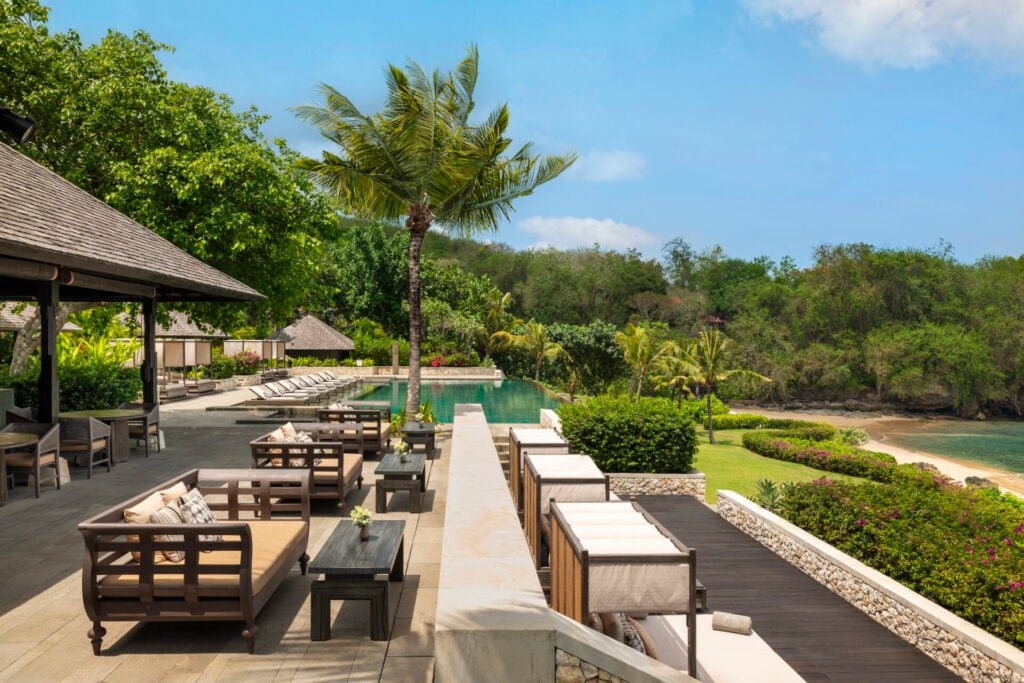
Q: Food is always central to the guest experience. How do you approach sourcing and food sustainability?
Our philosophy is 80/20: 80 per cent of ingredients are sourced locally, 20 per cent imported only when necessary. For example, olive oil must be imported to meet the standards of our chefs. But wherever possible we work with local producers.
In Jimbaran, just nearby, we source seafood from fishermen who use traditional pole-and-line techniques. For fresh produce we work with a mix of small-scale farmers and larger distributors for volume items like lettuce. At Rumari restaurant, we highlight these partnerships through origami-style menus that list exactly which farmer supplied each ingredient. Guests love seeing where their food comes from.
Q: Waste is another huge issue for hotels. What have you put in place?
Around 80 per cent of our waste is garden waste, about 60 tons a month. We run in-house composting that follows nature’s cycle, without chemicals. Green matter like fresh leaves and food scraps is layered with brown matter like dried leaves and twigs. After three months it becomes rich fertiliser, which we return to the gardens.
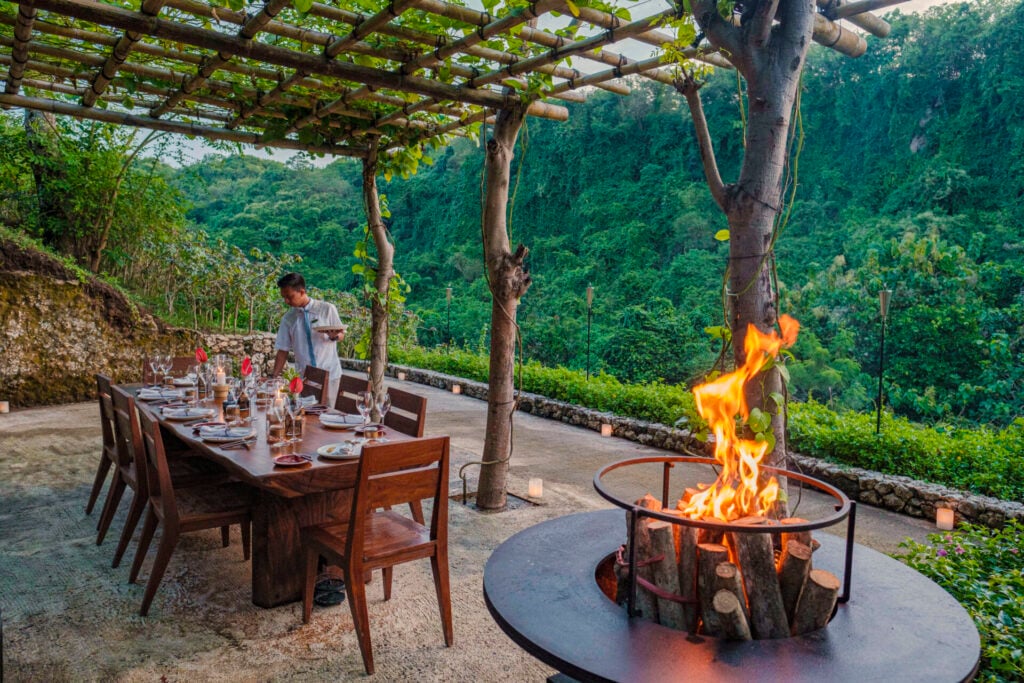
Kitchen waste is also included, making it a circular system. For other waste, we sterilise and reuse glass bottles through a local vendor. In-house bottling is part of our future plan, but for now we’re confident in our local partner’s standards.
Q: Guests talk about the sense of immersion in nature here. How do you create that?
We want guests to feel connected to the surroundings. Apart from the lush gardens, we have nature based activities like botanical tours that showcase native plants, outdoor spa treatments accompanied by birdsong and the sound of the river, and yoga or meditation inside a natural cave. We found the cave during construction and we haven’t altered it, we just decorate it with candles or flowers for special moments, like meditation sessions or private dinners.
We also offer cultural activities: jamu (traditional herbal tonic) workshops, Balinese dance classes for children, and visits to local homes where guests can learn rituals and try traditional sweets.

We have more than 10 bird species around the property, including the bright-blue kingfisher, and guests love all the butterflies, geckos, and bats. By minimising artificial lighting, we also give guests breathtaking views of the night sky.
Q: And on the marine side, tell us about the turtle conservation programme.
Our beach is a nesting ground for sea turtles. Each year, they return to the place they were born to lay their eggs. In 2024 alone, 18 nests hatched on our beach, and 459 baby turtles were released into the ocean. Guests are always invited to join these releases and they often cry watching them make their way to the ocean. We deliberately keep the beach dark at night so the turtles follow the moonlight to the sea, not artificial lights.
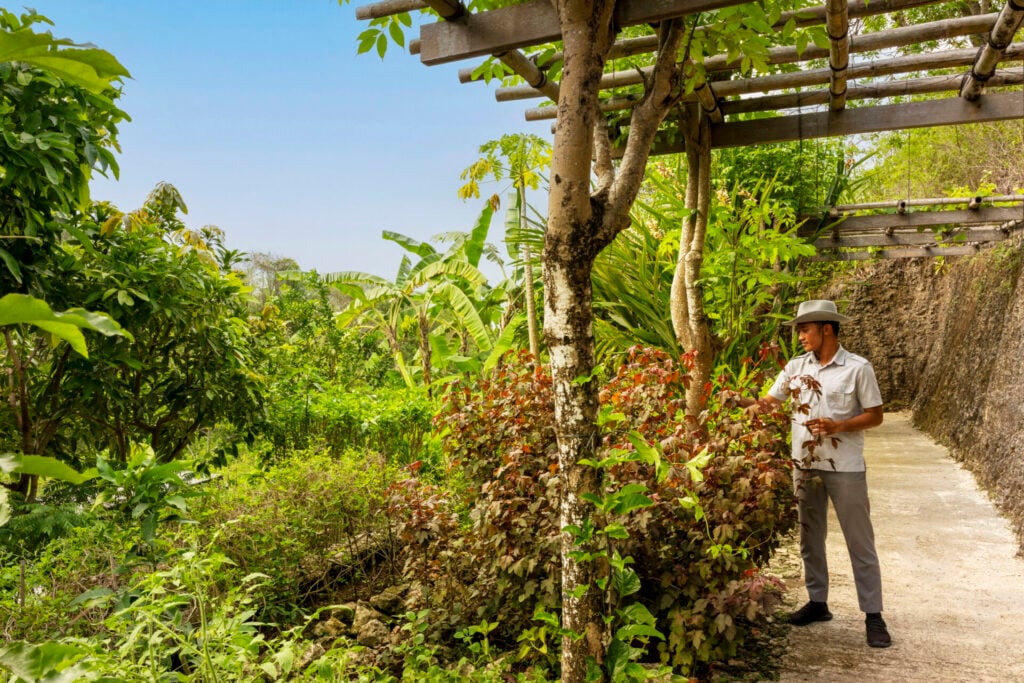
Q: Finally, what’s next for sustainability at Raffles Bali?
Sustainability is never finished. We’re proud of what we’ve achieved, but there’s always more to do. Most importantly, we want to keep collaborating with local communities, conservation groups, and other resorts. When I was younger, people would ask me why I cared so much about sustainability. Now those same people come and ask me for advice. That gives me hope.
To learn more visit rafflesbali.com

